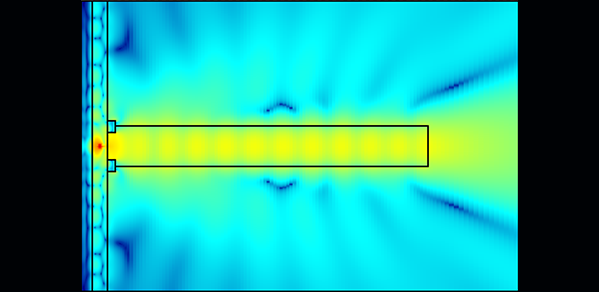
An innovative method for improving single photon collection – an essential step in advancing secure communications, high-precision imaging and quantum computing – has been developed by researchers at the University of Cambridge and the National Institute of Standards and Technology (NIST) in the United States.
Our approach allows for a more efficient coupling of quantum light into optical fibres, which is a crucial step in transferring quantum information.
Dr Luca Sapienza
The method, which involves integrating direct laser written polymer nanowires with gold nanorings, represents a critical advancement in the development of practical quantum technologies. The research teams have demonstrated a scalable and highly adaptable approach to guiding single photons efficiently into optical fibres.
The results are reported in the journal Advanced Quantum Technologies, with a graphical abstract from the research making the back cover of a recent edition of the journal.
One of the major hurdles in quantum technology is the efficient collection and direction of single photons, which serve as fundamental units of quantum information. Traditional semiconductor-based methods often impose design trade-offs that limit their flexibility and scalability.
However, this approach by Dr Luca Sapienza, Associate Professor in Quantum Engineering at Cambridge, and Dr Kartik Srinivasan, NIST Fellow, overcomes these limitations by leveraging the 3D fabrication capabilities of polymer nanowires. These structures not only enhance photon extraction but also preserve the performance of quantum emitters, making them highly suitable for integration into existing photonic networks.
“Our approach allows for a more efficient coupling of quantum light into optical fibres, which is a crucial step in transferring quantum information,” said Dr Sapienza. “Polymer nanowires offer significant advantages – they are easy to fabricate, provide broad operational bandwidth and offer greater design flexibility than other solutions currently available.”
The researchers have shown that metallic nanorings can allow the collection of up to seven million single photons per second. They also demonstrated more than a threefold increase in photon count rates when polymer nanowires are added to the same nanoring devices, marking a significant step forward in the efficient collection and manipulation of quantum light.
Unlike conventional semiconductor-based nanowires, which require complex fabrication and often suffer from limitations such as spectral diffusion and structural instability, the polymer-based approach offers many benefits:
- It improves photon collection by guiding single photons into well-defined optical modes optimised for fibre coupling.
- The fabrication process enhances scalability, enabling high-yield production with a 95% success rate in creating single-mode nanowires.
- The 3D printing capability provides design flexibility, allowing precise tailoring of nanowire geometry to suit different quantum applications.
Future applications and collaborations
With potential uses of single photons in quantum communication networks, next-generation imaging systems and quantum computing architectures, this breakthrough could help develop the future of quantum technologies.
“This combined, hybrid, semiconductor-metal-polymer technology represents a step toward the realisation of scalable, bright quantum light sources, which are fundamental to most quantum technologies,” said Dr Sapienza.
The study has attracted interest from both academic and industrial sectors, with potential collaborations on the horizon to explore real-world implementations of this technology.
Reference:
Direct-Laser-Written Polymer Nanowire Waveguides for Broadband Single Photon Collection from Epitaxial Quantum Dots into a Gaussian-like Mode’. Advanced Quantum Technologies (2023). DOI: 10.1002/qute.202300149. Graphical Abstract.
Adapted from a news article published on the Electrical Engineering at Cambridge website – written by Michael Shuff.

